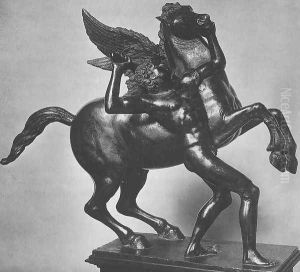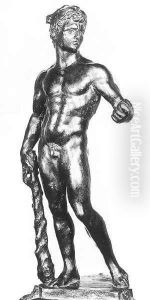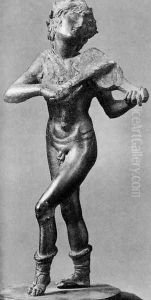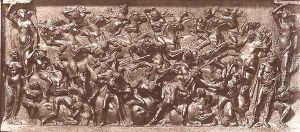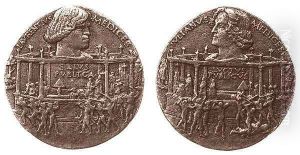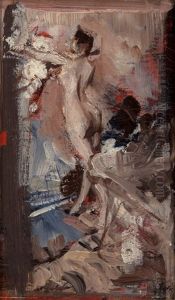Bertoldo Di Giovanni Paintings
Bertoldo di Giovanni was a notable Italian sculptor and medalist who is remembered primarily for his work during the Renaissance. Born around 1440, Bertoldo was a student of Donatello, one of the greatest sculptors of the time, and later became a close associate of the powerful Medici family in Florence.
While Bertoldo's early life is not well-documented, his artistic career began to flourish under the patronage of Lorenzo de' Medici, also known as Lorenzo the Magnificent. Lorenzo's support of the arts created a vibrant cultural environment in Florence, and Bertoldo became an integral part of this movement. Though he produced a relatively small body of work, Bertoldo's sculptures and medals reflect the transition from the robust realism of the early Renaissance to the more classical and harmonious forms that characterized the High Renaissance.
Bertoldo's work as a medalist was particularly influential, and he contributed to the development of the portrait medal as a form of art. His pieces often featured profile portraits and were characterized by their fine detail and the integration of classical motifs and inscriptions. As a sculptor, Bertoldo is known for his small bronze statuettes, which were highly prized among the art collectors of the Renaissance. These works often depicted mythological or historical subjects and showcased Bertoldo's mastery of both form and narrative.
One of Bertoldo's most significant contributions to the world of art was his role as a teacher. In 1488, he was appointed as the head of the Platonic Academy's garden of San Marco, where Lorenzo de' Medici displayed his collection of antique sculptures. There, Bertoldo instructed a number of young artists, the most famous of whom was Michelangelo Buonarroti. Michelangelo's early exposure to classical art and sculpture under Bertoldo's guidance had a profound impact on his development as an artist.
Bertoldo di Giovanni continued to work and teach in Florence until his death in 1491. Although his own artistic output was not extensive, his influence on the Renaissance and on his pupils, especially Michelangelo, was significant. Through his teaching and his art, Bertoldo played a key role in the dissemination of classical ideas and the evolution of Renaissance sculpture.
